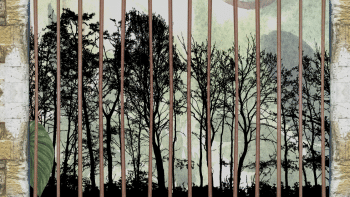Stop institutional grabbing of forests

Given the rate at which our forest coverage is depleting, it can be easily said that soon we will have little forestland left to maintain the ecological balance so critical for our survival. On the one hand, the government is making pledges to preserve our forests; on the other hand, it is allowing many of its own agencies to grab parts of forests to implement their various projects. If this trend continues, not only will we fail to fulfil our pledge to stop deforestation by 2030 – which the government has made at the Glasgow Leaders' Declaration on Forests and Land Use in COP26 – but we may also have to face harsher impacts of climate change going forward. Needless to say, the damage to be done to the rich biodiversity and wildlife of these forests would be irreparable.
Ignoring all concerns, however, the Roads and Highways Department has reportedly embarked on an environment-degrading project as it seeks 174 acres of the Ramgarh-Sitakunda Reserve Forest in Chattogram – one of the oldest reserve forests in the country – to widen a road going through it. This is, we must say, in line with a disturbingly growing tradition of institutional grabbing of forests in Bangladesh.
Over the past decade, a number of attempts were made to grab protected forestland in Cox's Bazar district alone. While the Department of Prison reportedly planned to build a prison on 160 acres of protected forestland in Paglirbil in Ukhiya upazila, the Bangladesh Football Federation (BFF) planned to build a residential training facility on 20 acres of Ramu reserve forest in the same district. Also recently, the Local Government Engineering Department planned to construct a road through the Ramu reserve forest, which would connect Ramu upazila with Cox's Bazar City at the Marine Drive along the sea beach. Earlier, the High Court gave a stay order on a similar project to build a civil service academy in this tourist district.
We cannot help but ask: why would the government agencies plan and implement projects on protected forestland, most of which were declared ecologically critical areas? What is noticeable in the majority of projects is, they have been undertaken without consulting the relevant government authorities – such as the Department of Environment and the Forest Department. In some cases, the land ministry allotted the land without consulting the forest ministry. Moreover, many of the projects started without even getting any environmental clearance. All this shows lack of coordination among government ministries and departments concerned.
We have already lost enough of our forests by now, and are in no position to lose more. We have all the laws and policies to protect our forests. But how long will they remain unimplemented? We urge government agencies to set an example of preserving forests, rather than destroying what's still left of them.


 For all latest news, follow The Daily Star's Google News channel.
For all latest news, follow The Daily Star's Google News channel. 






Comments